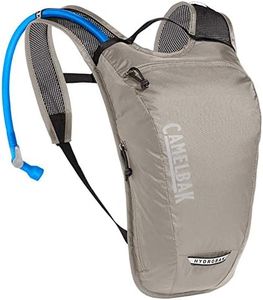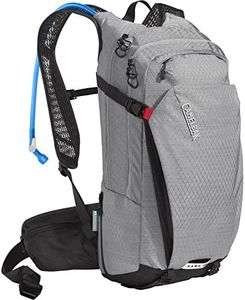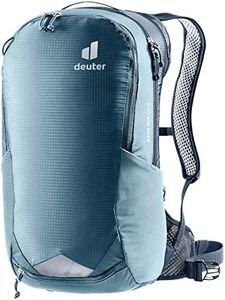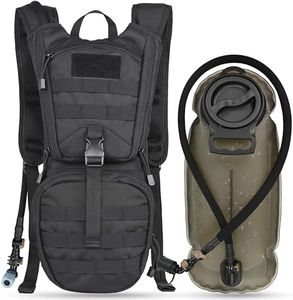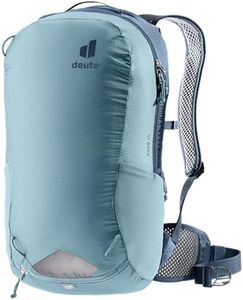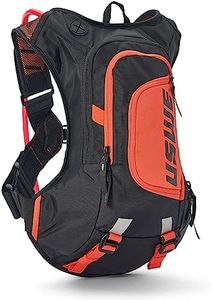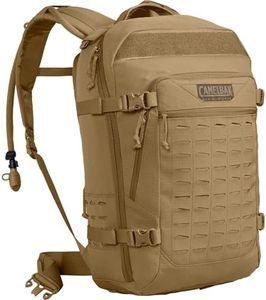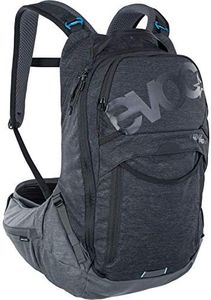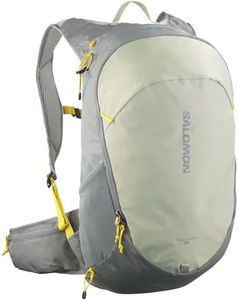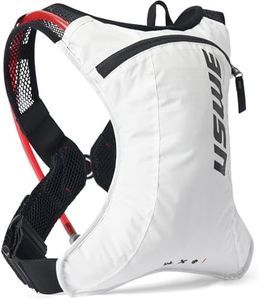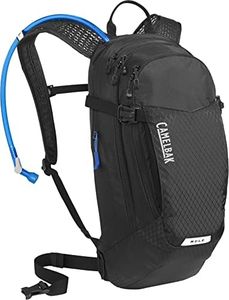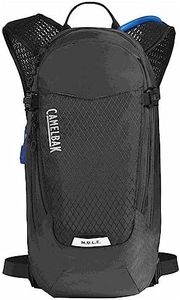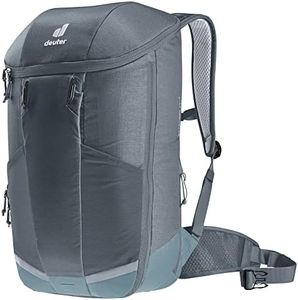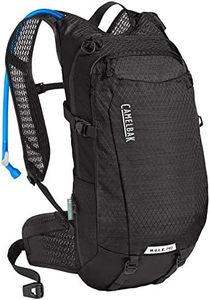We Use CookiesWe use cookies to enhance the security, performance,
functionality and for analytical and promotional activities. By continuing to browse this site you
are agreeing to our privacy policy
10 Best Mountain Biking Backpacks
From leading brands and best sellers available on the web.Buying Guide for the Best Mountain Biking Backpacks
Choosing the right mountain biking backpack is essential for comfort, safety, and practicality during your rides. The perfect backpack for you depends on your riding style, the length of your rides, and what you typically need to carry. It’s important to consider both the functionality and fit of the backpack. A well-chosen mountain biking backpack will distribute weight evenly, provide easy access to your essentials, and stay securely in place on rough terrain. Understanding the key features will help you make an informed choice for your riding needs.Capacity (Volume in Liters)Capacity measures how much you can fit inside your backpack, typically in liters. This is important because it determines how much gear, water, and food you can take on your ride. Smaller backpacks, around 5-10 liters, are best for short rides or racing when you only need water, a snack, and some tools. Mid-sized packs, around 10-20 liters, can handle longer rides or variable weather by fitting a jacket, extra layers, and more supplies. Larger packs above 20 liters are for full-day adventures or carrying lots of gear. Consider your usual ride duration and what you like to carry—if you pack light, a smaller size is great; for those who prepare for anything, go bigger.
Hydration CompatibilityHydration compatibility refers to whether the backpack can hold a hydration bladder (a water reservoir with a drinking tube) which helps you drink conveniently while riding. Most mountain biking backpacks offer a hydration sleeve and a port for the drinking tube. Some come with a bladder included, while others require you to purchase one separately. Bladders are commonly 1.5 to 3 liters in size; smaller is lighter, but larger ones are useful for long or hot rides where you need more water. If you value simplicity and want to stay hydrated without stopping, make sure your pack has this feature.
Fit and Comfort (Straps and Back Panel)Fit and comfort depend on how the backpack sits on your body and handles movement. Good mountain biking backpacks have adjustable shoulder, chest, and sometimes waist straps, as well as breathable, padded back panels. A secure fit is important so the backpack doesn’t bounce around when you hit bumps, and a ventilated back helps reduce sweat. Some packs are available in multiple sizes or include adjustability for a better custom fit. If you’re planning long or technical rides, or if comfort is a priority, make sure the pack fits you snugly without being restrictive.
Organization and PocketsOrganization means how the backpack’s compartments and pockets are arranged. Multiple pockets and compartments let you separate tools, snacks, keys, and other small items, so you’re not digging through one big compartment. Some packs offer quick-access pockets for essentials or special sections to keep wet gear or dirty clothing apart. If you like things organized or often need to grab specific items on the go, look for a backpack with varied, well-thought-out pockets.
Weight and MaterialWeight is how heavy the backpack is when empty, and material refers to what the pack is made from. Lighter backpacks are easier to carry and won’t add as much to your total load, which is great for speed or comfort. Tough, water-resistant materials protect your gear from the elements and from wear and tear, and often last longer. If you ride in rough terrain or bad weather, or if you tend to be hard on your gear, prioritize sturdy materials. For short or less demanding rides, a focus on lighter weight can enhance comfort.
Protection FeaturesSome backpacks offer extra protection like built-in back protectors or rain covers. Back protectors provide some impact cushioning if you fall, which can be valuable on technical or risky trails. Rain covers or waterproof sections help keep your belongings dry in wet weather. These features add a bit of weight but can make a difference if you often ride rough trails or in unpredictable conditions. Think about your riding environment and choose protection features that match your risk level and local climate.
